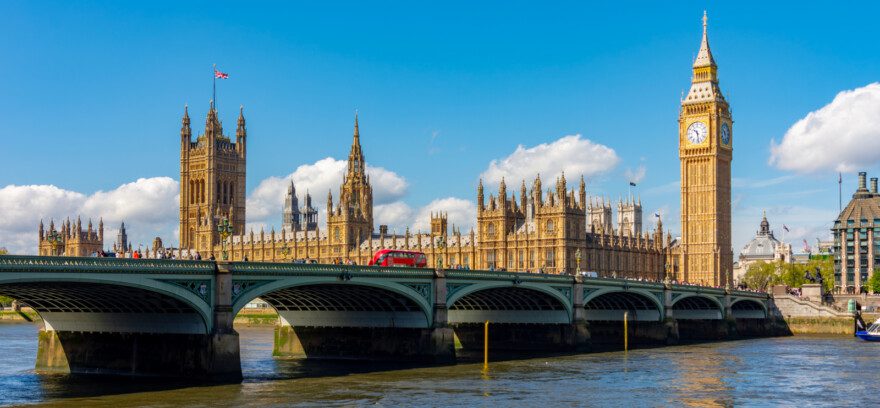UK markets rose this week, supported by optimism from China’s stimulus measures, with the FTSE 100 Index gaining 1.02% to trade at 8,310 points at the time of writing.
The Prime Minister, Sir Keir Starmer, has cleared the way for a big increase in capital spending at next month’s Budget, as his government won the backing of the Paris-based Organisation for Economic Co-operation and Development (OECD) for reforms to boost growth-enhancing public investment. The Prime Minister said he wanted government spending to act as a catalyst for private investment, and signalled that he believed the UK’s fiscal rules should be designed to aid capital spending.
Chancellor, Rachel Reeves will set out revised fiscal rules at the budget on October 30th with Whitehall insiders reporting that she wants to ensure they do not stop billions of Pounds being invested in areas such as the green energy transition, roads and hospitals. Before the election, Starmer slashed Labour’s flagship green spending plan from £28 billion annually to just £4.7 billion a year because of the fragile state of the public finances. Some of those cuts could now be reversed. Starmer has insisted that there is a difference between borrowing to fund day-to-day spending and using public debt to finance investment, which he said could help grow the economy.
His comments come as the OECD, a think-tank for 38 mostly rich countries, urged the UK to rewrite its “short-termist” fiscal rules to allow higher public investment that would drive growth. However, economists stressed the government will need to be cautious about how much extra borrowing capacity it uses for investment given the need for it to maintain the confidence of financial markets.
The OECD expects UK GDP to expand by 1.2% in 2024 and 1% in 2025. However, inflation is likely to prove stickier in the UK than in any other G7 economy on the OECD’s projections, averaging 2.7% in 2024 and 2.4% in 2025. Sterling strengthened towards $1.34 this week and is set to make further gains, thanks to a buoyant UK economy and the Bank of England’s caution on cutting interest rates. Bank of America and Barclays expect the pound to rise to $1.35 by the end of the year. Goldman Sachs has a price target of $1.40 over the next 12 months.
Commodity markets
In the commodity markets, Brent crude futures traded around $72 per barrel on Friday and are set for a weekly fall, on a report that Saudi Arabia is committed to pressing ahead with production increases later this year, even if the move results in a prolonged period of low oil prices. Prices are also under pressure on the expectation that oil production will rise in Libya.
Factions in the North African country reached a deal on Wednesday to appoint a new central bank governor. A political dispute over who should lead the bank has led to production disruptions. The prospect of rising production is set against a backdrop of soft demand in China, the world’s largest crude importer and second largest consumer.
Oil prices rallied earlier in the week after Beijing announced a new stimulus package which included sweeping interest rate cuts and more funding.
The intensifying conflict between Iran-backed Hezbollah in Lebanon and Israel helped to support crude prices, with cross border rockets launched by both sides, increasing fears of a wider conflict.
Gold prices traded around $2,660 an ounce on Friday, scaling fresh highs again this week, on mounting expectations for another US interest rate cut this year.
Gold has risen more than 29% so far in 2024, hitting record highs several times, fuelled by US rate cuts, safe-haven demand due to geopolitical and economic uncertainty, and central bank buying.
Equity markets
US equity futures were little changed on Friday as investors awaited the personal consumption expenditures report, which is the Federal Reserve’s preferred inflation gauge. In Thursday’s regular session, the Dow Jones Industrial Average rose 0.62%, the S&P 500 gained 0.40%, while the Nasdaq Composite advanced 0.60%.
The number of Americans filing new applications for unemployment benefits dropped to a four-month low last week, suggesting that the labour market remains healthy.
Initial claims for state unemployment benefits dropped by 4,000 last week to a seasonally adjusted 218,000, the lowest since mid-May, the Labor Department said. This was better than the 225,000 claims forecast by economists in a Reuters poll. Although the labour market has lost momentum amid declining job openings and a step-down in hiring, lay-offs have remained low and there are no signs of deterioration.
The upbeat outlook on the economy was underscored by other data on Thursday which showed that corporate profits increased at a more robust pace than initially thought in the second quarter. Strong profit growth should help to underpin the labour market and potentially shield the economy from a recession. Gross domestic product growth was unrevised at 3.0% last quarter, in line with economists’ expectations. The economy’s resilience could make it harder for the Federal Reserve to deliver another 0.5% interest rate cut in November as some investors are hoping.
The information provided in this communication is not advice or a personal recommendation, and you should not make any investment decisions on the basis of it. If you are unsure of whether an investment is right for you, please seek advice. If you choose to invest, your capital may be at risk and the value of an investment may fall as well as rise in value, so you could get back less than you originally invested.
